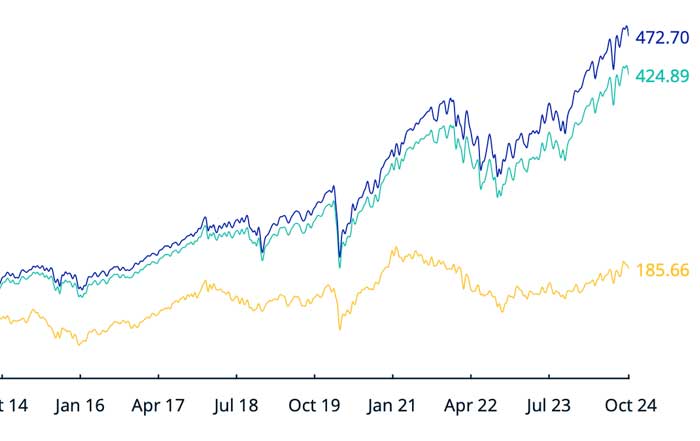In today’s interconnected global economy, digital marketing has evolved from being a supportive promotional tool to becoming the central engine of business growth across industries. As of 2025, companies ranging from multinational corporations to local startups face the undeniable truth that digital visibility determines survival. Consumers no longer simply buy products or services—they engage with brands through multiple online touchpoints, from social media platforms and search engines to mobile applications and personalized email campaigns. The acceleration of artificial intelligence, data-driven decision-making, and automation has further heightened the importance of adopting comprehensive digital strategies.
For organizations striving to remain competitive, digital marketing is not optional—it is foundational. It enhances global reach, optimizes customer engagement, and provides measurable returns on investment. Businesses that delay their transformation risk being eclipsed by more agile competitors who understand the importance of leveraging digital ecosystems to build relationships and foster loyalty.
The Transformation of Marketing: From Print to Digital Dominance
Over the last two decades, the marketing landscape has shifted radically. Traditional advertising channels such as print newspapers, billboards, and television still hold relevance, but their dominance has waned due to declining audience attention and high costs. Digital platforms, on the other hand, offer affordability, precision targeting, and global scale.
A company in New York can launch a campaign that reaches potential customers in London, Singapore, and Sydney within minutes. Tools like Google Ads, Meta Business Suite, and programmatic advertising networks allow businesses to target specific demographics, interests, and behaviors. This shift has democratized marketing, enabling small businesses to compete with established corporations on more equal terms.
Businesses that embrace these tools can enhance their adaptability and integrate artificial intelligence for predictive analytics, campaign optimization, and personalized messaging. Those that fail to do so risk falling into obscurity, unable to capture the attention of a digitally native generation. Learn more about the role of artificial intelligence in business.
Data-Driven Decision Making: Why Analytics Define Success
One of the most compelling reasons why digital marketing has become indispensable lies in its ability to provide actionable data. Traditional advertising often left companies guessing about the impact of campaigns. Today, every click, view, and interaction can be measured.
Platforms like Google Analytics 4, HubSpot, and Adobe Experience Cloud give companies the ability to track customer journeys, identify bottlenecks, and understand consumer preferences. By integrating these insights, businesses can make informed decisions that maximize efficiency and profitability.
Moreover, predictive analytics powered by AI-driven algorithms help businesses anticipate customer behavior, enabling proactive strategies rather than reactive adjustments. These insights not only enhance marketing performance but also inform broader business decisions in areas such as investment, supply chain, and product development.
Digital Marketing Evolution Roadmap
Traditional Era
Print, TV, and radio dominated marketing. Limited targeting and measurability.
Social Media Rise
Facebook, Twitter emerge. Businesses start building online communities and engagement.
Mobile & Data Era
Mobile-first strategies emerge. Advanced analytics and targeted advertising become standard.
AI & Personalization
AI-driven campaigns, hyper-personalization, and omnichannel experiences define marketing.
Key Digital Marketing Components
Analytics
Data-driven insights for optimization
Targeting
Precision audience segmentation
Mobile
Mobile-first optimization
AI Tools
Automated optimization
Digital Marketing Adoption Progress
Global businesses embracing comprehensive digital strategies
Global Reach: The Borderless Nature of Digital Campaigns
Unlike traditional channels constrained by geography, digital marketing allows brands to operate in a borderless environment. Social media platforms such as Instagram, TikTok, and LinkedIn connect billions of users across continents, while e-commerce marketplaces like Amazon, Alibaba, and Shopify integrate localized campaigns with global logistics.
For example, a Canadian startup in eco-friendly skincare can use influencer marketing on TikTok to attract an audience in Germany, Australia, and Brazil simultaneously. Similarly, businesses in Europe can use cross-border SEO strategies to ensure visibility in markets across Asia or North America.
This globalization of marketing creates enormous opportunities but also requires companies to develop strategies that are culturally sensitive and compliant with international regulations. Understanding global trade, consumer psychology, and sustainable business practices is essential for growth in diverse markets.
The Central Role of Search Engines and SEO
Search engines remain the primary gateway through which consumers discover businesses. Studies show that the majority of online transactions begin with a search query. Companies that fail to optimize their digital presence risk being invisible to potential customers.
Search Engine Optimization (SEO) has become more sophisticated in 2025, with a stronger emphasis on high-quality content, mobile responsiveness, and voice search compatibility. As AI-powered assistants such as ChatGPT, Google Gemini, and Amazon Alexa reshape user behavior, businesses must ensure their digital content is discoverable in these ecosystems.
Additionally, local SEO strategies empower small businesses to thrive in their communities. For example, a bakery in Madrid can dominate local search rankings by optimizing for “best bakery near me,” attracting nearby customers who are ready to purchase. The ability to integrate SEO with broader business and marketing strategies is critical for maintaining visibility in a competitive environment.
Social Media Marketing: Building Communities and Brand Loyalty
In 2025, social media has evolved beyond being a channel for posting updates—it has become a full-scale commerce, communication, and customer-service ecosystem. Platforms like TikTok Shop, Instagram Checkout, and Facebook Marketplace allow businesses to convert engagement into direct sales.
Beyond transactions, social media provides opportunities to build communities around shared values. For example, brands advocating sustainability, diversity, or innovation can foster loyal followings by aligning with the principles of their audiences. Businesses that excel on social platforms not only generate revenue but also strengthen their reputation and credibility.
However, success in social media requires more than frequent posting. Businesses must master storytelling, leverage user-generated content, and integrate real-time engagement strategies such as livestream shopping or interactive polls. Companies that succeed in creating authentic connections stand out in a digital landscape increasingly saturated with competing voices.
AI and the Evolution of Marketing
Artificial intelligence has redefined the way businesses create, distribute, and measure digital marketing campaigns. In 2025, AI is no longer a futuristic concept but an operational necessity. AI tools analyze massive datasets in real time, enabling companies to predict trends, automate ad placements, and personalize customer experiences with remarkable accuracy.
Platforms such as Google Performance Max, Meta Advantage+, and Microsoft Advertising AI utilize machine learning to optimize campaigns dynamically. These systems identify which audience segments respond best to specific messages, when they are most likely to engage, and through which channels. This precision reduces wasted ad spend and amplifies return on investment.
Generative AI has also become a creative powerhouse. Tools like MidJourney for design, ChatGPT for content, and Synthesia for video production empower businesses to produce high-quality marketing assets at scale. As personalization becomes the cornerstone of modern marketing, AI ensures that each customer receives messaging aligned with their unique preferences and behaviors. Learn more about how technology is reshaping industries globally.
Personalization and Customer-Centric Strategies
Consumers now expect brands to deliver experiences tailored to their individual needs. Generic campaigns rarely generate meaningful engagement. Digital marketing provides the infrastructure for businesses to design hyper-personalized strategies, driven by customer data and behavioral insights.
For example, an e-commerce platform in the United States may use AI-driven recommendation engines to suggest products based on past purchases, browsing history, and even predicted seasonal needs. Similarly, financial institutions can personalize messaging about banking or investment services based on the customer’s life stage, risk appetite, and spending patterns.
Email marketing platforms now integrate with customer relationship management (CRM) systems to deliver dynamic content that changes according to user engagement. When executed effectively, personalization fosters loyalty, increases customer lifetime value, and builds stronger emotional connections between brands and audiences.
The Integration of Crypto and Blockchain in Marketing
One of the most fascinating developments in recent years has been the integration of cryptocurrency and blockchain into digital marketing strategies. Businesses are increasingly adopting crypto payments, decentralized loyalty programs, and blockchain-based verification systems to enhance transparency and security.
For instance, blockchain can authenticate ad impressions, preventing fraud and ensuring that businesses only pay for genuine engagements. Crypto-based loyalty tokens allow brands to reward customers in new and innovative ways, creating ecosystems where participation translates into tangible financial benefits.
As businesses navigate the evolving world of decentralized finance, understanding how crypto intersects with marketing, stock markets, and consumer psychology becomes a competitive advantage. Learn more about the impact of crypto on the global economy.
Employment and the Digital Skills Revolution
The rise of digital marketing has transformed the employment landscape worldwide. As traditional marketing roles decline, new opportunities have emerged in data analytics, AI-driven campaign management, SEO optimization, and social media strategy. Businesses increasingly demand professionals who can combine technical expertise with creative problem-solving skills.
This shift has created a global digital skills gap. Companies in regions like North America, Europe, and Asia report difficulties finding qualified talent, while employees in emerging markets see digital marketing as a gateway to global careers.
Educational institutions and private training providers are rapidly adapting, offering certifications in areas such as Google Ads, programmatic advertising, and AI-driven analytics. For businesses, investing in workforce development is no longer optional. Staying competitive requires ensuring employees can navigate tools and trends that evolve at unprecedented speed. Explore more about employment challenges and solutions in the digital economy.
The Role of Content Marketing in Brand Authority
Content remains king in 2025, but the definition of content has expanded dramatically. Beyond blog posts and infographics, businesses now leverage podcasts, interactive videos, AR/VR experiences, and even gamified campaigns to engage audiences.
High-quality content not only drives search engine visibility but also establishes credibility. For example, publishing thought-leadership articles on sustainability can position a brand as a trusted voice in global discussions. Meanwhile, producing immersive VR product demos enables businesses to differentiate themselves in competitive markets like automotive or real estate.
Content strategies must also consider cross-platform distribution. Audiences consume content across LinkedIn, YouTube, Spotify, TikTok, and emerging Web3 platforms, often simultaneously. Businesses that design integrated storytelling strategies—supported by data insights—outperform competitors that rely on isolated efforts.
Future Trends: Where Digital Marketing is Headed
The next decade will be defined by convergence. Artificial intelligence, immersive technologies, and sustainability will continue to reshape how businesses approach marketing. Several trends stand out for the near future:
Voice and Conversational Marketing: With the rise of AI assistants, voice search optimization will be essential for maintaining visibility.
Augmented Reality Commerce: Retailers are embedding AR features to allow customers to “try before they buy,” from fashion to furniture.
Sustainability Marketing: As consumers demand accountability, businesses will need to showcase transparent supply chains and eco-friendly practices. Learn more about sustainable business transformations.
Global Micro-Influencers: Instead of celebrity endorsements, brands will leverage local influencers in diverse markets for authentic engagement.
Privacy and Regulation: With stricter data protection laws in the EU, US, and Asia, businesses will have to balance personalization with compliance.
The businesses that thrive will be those that anticipate these shifts, experiment with emerging tools, and remain agile in their strategies.
Digital Marketing as the Cornerstone of Modern Business
In 2025, digital marketing is not just a tactical advantage—it is the cornerstone of modern business strategy. Companies that embrace it achieve global reach, build enduring customer relationships, and maintain resilience in volatile markets. Those that hesitate risk being overshadowed by competitors who understand that in a digital-first world, visibility and engagement are inseparable from growth.
Whether a multinational corporation, a mid-sized enterprise, or a local startup, every business must view digital marketing as a critical investment in its future. From artificial intelligence and blockchain to content creation and social media engagement, the tools are available, and the opportunities are boundless.
The imperative is clear: digital marketing is no longer a question of if, but how effectively businesses leverage it to define their place in the global economy.
Regional Perspectives: Digital Marketing Across the Globe
While the principles of digital marketing are universally applicable, regional variations shape how businesses implement their strategies. Each market presents distinct consumer behaviors, regulatory frameworks, and technological adoption rates that companies must understand to succeed.
United States: The Epicenter of Digital Marketing Innovation
The United States continues to lead in digital marketing innovation, driven by Silicon Valley’s technological ecosystem and the world’s largest advertising spend. Platforms like Google, Meta, and Amazon dominate the landscape, offering businesses highly advanced targeting tools.
American consumers are accustomed to personalized experiences, and businesses that fail to deliver real-time, tailored content risk losing market share. Companies are also integrating sustainability and inclusivity into their messaging, aligning with shifting cultural expectations. With increasing scrutiny around data privacy, compliance with regulations such as the California Consumer Privacy Act (CCPA) has become a vital aspect of campaign design.
Europe: Regulation and Sustainability at the Core
Europe is defined by its stringent regulatory environment and strong consumer expectations around sustainability. The General Data Protection Regulation (GDPR) set global standards for data protection, and businesses must balance personalization with strict compliance.
European companies excel at integrating eco-conscious messaging into their campaigns. For example, Scandinavian retailers emphasize carbon-neutral delivery and transparent supply chains as part of their digital marketing strategies. Businesses in Germany, France, and the Netherlands often combine sustainable practices with storytelling to attract socially conscious consumers.
Asia-Pacific: Mobile-First and Hyper-Social
The Asia-Pacific region, including China, Japan, South Korea, and Southeast Asia, represents the fastest-growing digital marketing market. With mobile penetration rates exceeding 90% in many countries, businesses must prioritize mobile-first strategies.
Platforms like WeChat in China, LINE in Japan, and KakaoTalk in South Korea integrate messaging, e-commerce, and payments, creating all-in-one ecosystems. Social commerce has exploded, with livestream shopping becoming a dominant trend. Brands that succeed in this region adopt localized content strategies, recognizing cultural nuances and consumer habits unique to each market.
Emerging Markets: Africa and Latin America
Africa and Latin America are experiencing a surge in digital adoption, driven by affordable smartphones and expanding internet access. Businesses here are leveraging digital marketing to overcome infrastructure gaps and reach consumers in previously underserved regions.
In Brazil, WhatsApp has become a primary channel for customer communication and e-commerce, while in Africa, mobile money platforms like M-Pesa are reshaping the way businesses connect with consumers. For companies expanding into these markets, digital marketing provides cost-effective entry points and rapid scalability.
Case Studies: Businesses Excelling Through Digital Marketing
Netflix: Personalization at Scale
Netflix exemplifies how digital marketing and personalization fuel growth. By using AI-driven recommendation algorithms, Netflix ensures that each user sees content tailored to their interests, increasing engagement and reducing churn. The company’s promotional campaigns across YouTube, TikTok, and Instagram are localized, creative, and data-driven, allowing Netflix to dominate global streaming markets.
Nike: Building Communities Through Social Media
Nike has mastered the art of combining storytelling with community building. Its campaigns focus on empowerment, inclusivity, and sustainability, resonating with diverse audiences worldwide. By leveraging platforms like TikTok for viral challenges and Instagram for influencer partnerships, Nike has created communities where customers feel connected not just to products, but to values.
Shopify: Empowering Global Entrepreneurs
Shopify has become the backbone for millions of small and medium-sized enterprises worldwide. Its integrated marketing tools allow businesses to run SEO campaigns, manage email marketing, and connect with social media advertising. By enabling entrepreneurs in regions like Canada, the UK, and Australia to access global customers, Shopify demonstrates how digital platforms can democratize global commerce.
Tesla: Disruption Without Traditional Advertising
Unlike most global brands, Tesla has eschewed traditional advertising, relying instead on digital engagement, word-of-mouth, and social media visibility. Its CEO Elon Musk frequently uses Twitter (X) to directly engage with customers, shaping brand perception and amplifying reach without the need for large-scale ad spend. Tesla’s model highlights the power of direct-to-consumer digital engagement in building brand loyalty.
Airbnb: Hyper-Localized Campaigns for a Global Market
Airbnb has mastered the art of localizing global campaigns. Its marketing emphasizes authentic travel experiences, often showcasing local hosts and communities. Airbnb leverages digital platforms to tell stories that resonate with travelers seeking cultural immersion, proving the importance of balancing global reach with local relevance.
Challenges in the Digital Marketing Landscape
Despite its advantages, digital marketing comes with challenges that businesses must address strategically:
Data Privacy and Security: Growing concerns over misuse of consumer data demand stricter compliance and transparent policies.
Content Saturation: With billions of posts published daily, standing out requires innovation and authenticity.
Ad Fatigue: Overexposure to digital ads can reduce engagement, forcing businesses to adopt creative storytelling instead of aggressive promotion.
Technological Disruption: Constant evolution of platforms and algorithms requires businesses to stay agile and adaptive.
Global Competition: As barriers to entry decrease, local businesses now face competition from global players with larger budgets and reach.
Why Digital Marketing Is Now a Core Business Investment
Digital marketing is no longer an auxiliary function of business—it is a fundamental driver of growth, profitability, and survival. Companies that view it as an investment rather than an expense position themselves to thrive in a dynamic marketplace.
The integration of artificial intelligence, blockchain, and immersive technologies ensures that digital marketing strategies will continue evolving. Businesses that commit to innovation, workforce development, and consumer-centric approaches will define the next generation of global leaders.
For decision-makers, the imperative is clear: digital marketing is not about keeping pace—it is about staying ahead. By aligning with evolving consumer expectations, embracing innovation, and leveraging the power of global connectivity, businesses can build enduring brands that resonate across continents.
Final Thoughts
In the competitive global economy of 2025, digital marketing has become the cornerstone of modern business strategy. Its ability to bridge geographical boundaries, personalize experiences, and provide measurable results makes it indispensable for every organization. Whether through AI-driven personalization in the United States, sustainable messaging in Europe, mobile-first strategies in Asia, or grassroots campaigns in emerging markets, digital marketing has proven itself as the universal language of growth.
Businesses that embrace digital marketing with creativity, authenticity, and technological sophistication will thrive in an era where visibility equals viability. Those that fail to adapt will be left behind in an increasingly borderless, data-driven, and consumer-empowered world. Find a Digital Marketing Expert to Manage your Google Ads and Facebook Ads as a perfect starting point.








